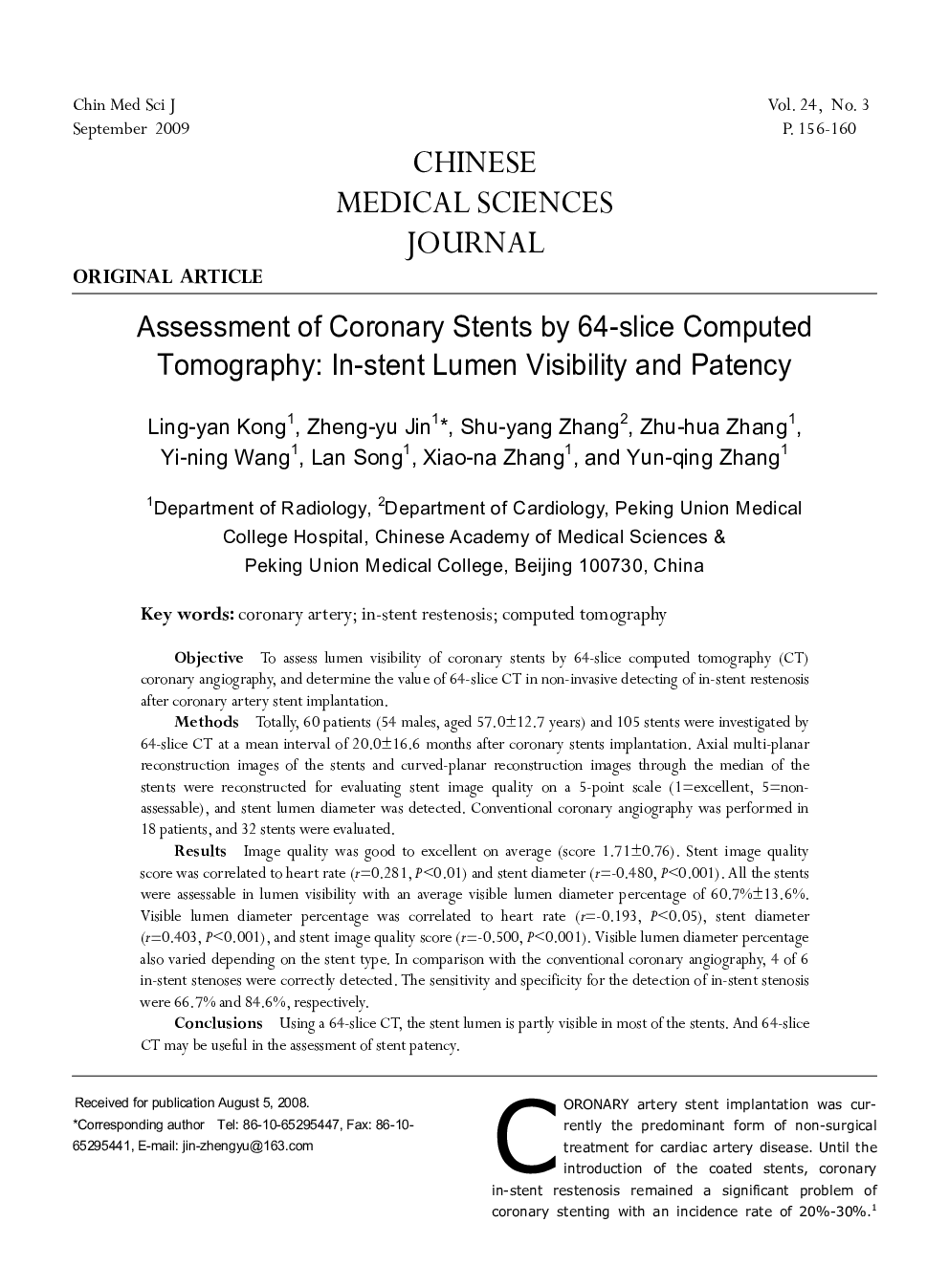| Article ID | Journal | Published Year | Pages | File Type |
|---|---|---|---|---|
| 3459749 | Chinese Medical Sciences Journal | 2009 | 5 Pages |
ObjectiveTo assess lumen visibility of coronary stents by 64-slice computed tomography (CT) coronary angiography, and determine the value of 64-slice CT in non-invasive detecting of in-stent restenosis after coronary artery stent implantation.MethodsTotally, 60 patients (54 males, aged 57.0±12.7 years) and 105 stents were investigated by 64-slice CT at a mean interval of 20.0±16.6 months after coronary stents implantation. Axial multi-planar reconstruction images of the stents and curved-planar reconstruction images through the median of the stents were reconstructed for evaluating stent image quality on a 5-point scale (1=excellent, 5=non- assessable), and stent lumen diameter was detected. Conventional coronary angiography was performed in 18 patients, and 32 stents were evaluated.ResultsImage quality was good to excellent on average (score 1.71±0.76). Stent image quality score was correlated to heart rate (r=0.281, P<0.01) and stent diameter (r=−0.480, P<0.001). All the stents were assessable in lumen visibility with an average visible lumen diameter percentage of 60.7%±13.6%. Visible lumen diameter percentage was correlated to heart rate (r=−0.193, P<0.05), stent diameter (r=0.403, P<0.001), and stent image quality score (r=−0.500, P<0.001). Visible lumen diameter percentage also varied depending on the stent type. In comparison with the conventional coronary angiography, 4 of 6 in-stent stenoses were correctly detected. The sensitivity and specificity for the detection of in-stent stenosis were 66.7% and 84.6%, respectively.ConclusionsUsing a 64-slice CT, the stent lumen is partly visible in most of the stents. And 64-slice CT may be useful in the assessment of stent patency.
